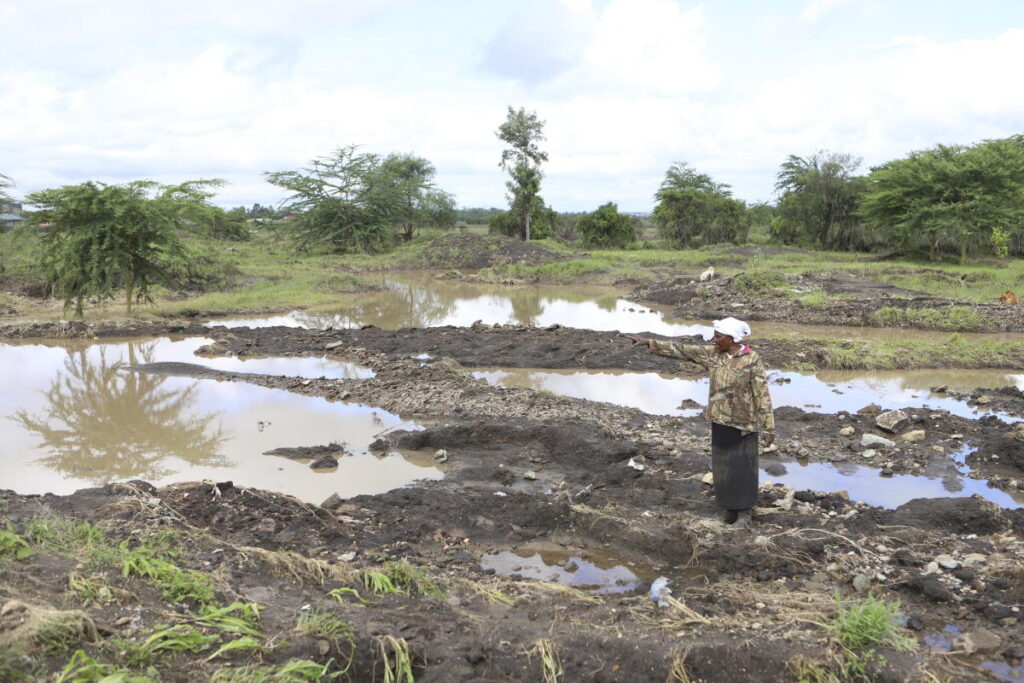MACHAKOS, Kenya (AP) — Martha Waema and her husband inspected their farm in dismay, which had been under water for weeks. incessant rainfall across Kenya. Water levels are expected to rise to shoulder height after a night of heavy rainfall.
The couple had expected to get 200,000 shillings ($1,500) back from their three acres after investing 80,000 shillings ($613) in maize, peas, cabbage, tomatoes and kale. But their hopes have been uprooted and dashed.
“I have been a farmer for 38 years, but I have never suffered such huge losses,” said the 62-year-old mother of 10.
Their financial security and optimism have been shaken by what Kenya’s The government has called it “a clear manifestation of the erratic weather patterns caused by climate change.”
The rains that began in mid-March have brought immediate dangers and brought others. They have nearly 300 people killed, dams left at historically high levels and led to the government ordering residents to evacuate flood-prone areas – and to demolish the houses of those who do not.
Now a food crisis looms, with even higher prices in a country whose president wanted to make agriculture even more important to the economy.
According to the Kenyan government, the floods have destroyed crops on more than 168,000 acres (67,987 hectares) of land, less than 1 percent of Kenya’s agricultural land.
As farmers count their losses – the scale of which is still unknown – the deluge has exposed what opposition politicians say is Kenya’s poor preparation for climate change and related disasters, and the need for sustainable land management and better weather forecasting.
Waema is now digging trenches to protect what remains of the farm on a plain on the far edge of the capital Nairobi, in Machakos County.
Not everyone is grieving, including farmers who prepared for climate shocks.
About 200 kilometres (125 miles) west of Waema’s farm, 65-year-old farmer James Tobiko Tipis and his 16-acre farm escaped flooding in Olokirikirai. He said he had been proactive in the landslide-prone area by terraced crops.
“We used to lose the topsoil and everything we planted,” he said.
More Kenyan farmers need to protect their farms from soil erosion, which is likely to be worsened by further climate shocks, experts say.
Jane Kirui, Narok County Agriculture Officer, stressed the importance of terracing and other measures such as green manures that allow water to be absorbed.
Efforts to conserve water supplies in Kenya’s rural areas remain inadequate despite the current abundant rainfall, experts say.
For example, at the Jomo Kenyatta University of Agriculture and Technology, Professor John Gathenya advised diversifying crops and emphasizing the natural water retention capacity of soil.
“Soil remains the largest reservoir of water,” he said, arguing that using it wisely requires far less investment than large infrastructure projects such as dams. But soil must be protected through practices that include limiting deforestation that has exposed parts of Kenya’s land to severe runoff.
“We are opening up land in new fragile environments where we have to be even more careful about how we farm,” Gathenya said. “In our quest for more and more food, we are penetrating into the more fragile areas, but not with the same intensity of soil conservation as 50 years ago.”
___
The Associated Press receives funding for global health and development reporting in Africa from the Bill & Melinda Gates Foundation Trust. The AP is solely responsible for all content. Find AP’s standards for collaboration with philanthropies, a list of supporters and funded coverage areas on AP.org.

